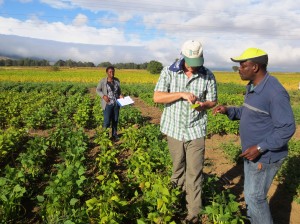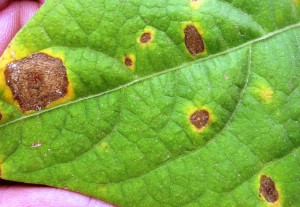Arusha, Mbeya, and Morogoro, Tanzania (6/09-6/15/2014)
Cooperative nurseries were coordinated between the Sokoine University and the ARS-FtF project at three sites in Tanzania. The ADP population (192 lines) was evaluated in collaboration with Susan Nchimbi and Paul Kusolwa at the Selian Station in Arusha for Ascochyta blight and Rust; at the Uyole Station in Mbeya for Acochyta Blight and Rust; and at the Mafiga Station in Morogoro for Agronomic performance. The analysis of the data showed good correlation, 0.75 and 0.72 for Rust and Ascochyta, respectively, between Arusha and Mbeya. This is the first evaluation of the ADP where consistent Ascochyta Blight pressure was present from natural infection, allowing for the evaluation of this important disease. Interestingly, there was little correlation between rust in the ADP in Tanzania during this evaluation and rust data collected from the ADP in South Africa in 2014, indicating a difference in the rust complex between the two sites. This geographic variability in the rust pathogen and potentially other pathogens such as Angular leaf spot (ALS), highlights the importance of multi-site trials. No fertilizer was applied at these sites, while residual fertility was noted in the non-nodulating controls in Mbeya and Morogoro. The potential yield, vigor, and overall plant development was superior at the Mbeya, Uyole Station. The prevalent disease at all sites was Ascochyta blight and Rust, while ALS incidence was low.
Single Plant Selection from PIC populations
The two PIC (Phaseolus Improvement Cooperative) populations evaluated at the three sites in Tanzania represent the first collaborative selection of F4 plants from bulk populations as a part of the FtF project in Africa (information about these populations is on this website). The parents of these two populations were identified as superior lines from the ADP. The PIC-005 population, Canada (ADP-0010) x CAL 143 (ADP-526), showed superior disease resistance to the PIC-003 population, Kilombero (ADP-0004) x AND 277 (ADP-553), thus most selections were made in the former population at all three sites.
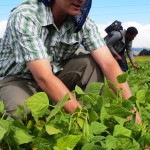 |
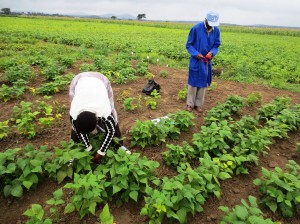 |
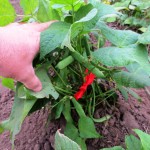 |
About 5-15 selections were made (using ribbons tied to main stem to identify plants, photos below) from each 8 row plot for disease resistance, yield potential, and agronomic performance. The selected lines showed superior disease resistance and agronomic performance as compared to most of the ADP lines evaluated at each site, and thus shows the potential for accelerated breeding progress using this approach.

